The "Berlin: Walking Tour Through the Hansaviertel" offers a unique opportunity to explore a district steeped in modernist architectural history and cultural significance. Participants will encounter striking designs by renowned architects like Walter Gropius while uncovering the vibrant stories of the community, including its Jewish heritage. This two-hour journey is not only informative but also accessible to all, ensuring everyone can appreciate the rich tapestry of Hansaviertel. As the tour unfolds, intriguing elements of the neighborhood’s past and its notable residents will emerge, prompting a deeper curiosity about what lies ahead.
Key Points
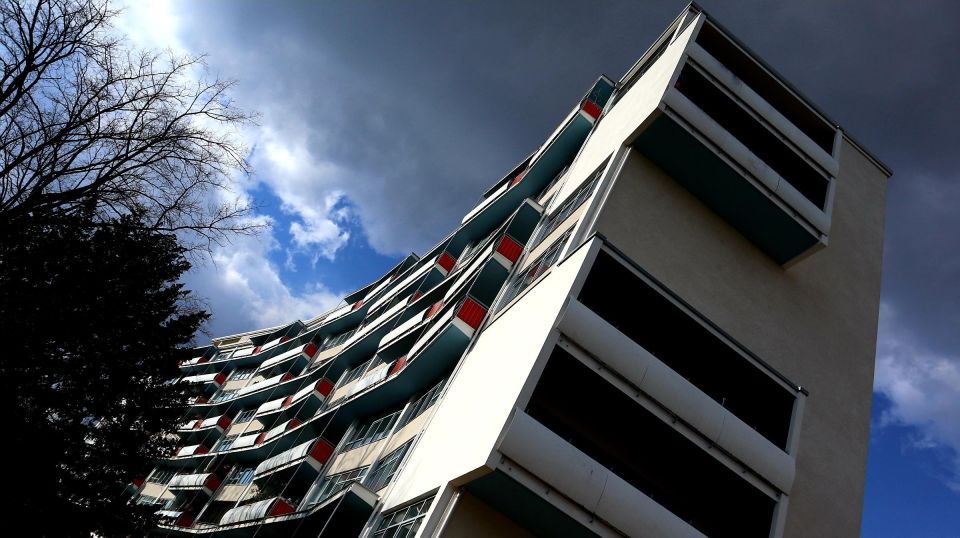
- The walking tour of Hansaviertel lasts approximately 2 hours, including 1.5 hours of insightful commentary on the area’s history and architecture.
- Priced from €20.00 per person, the tour offers an affordable experience for participants exploring Berlin’s modernist architectural gems.
- Tours are available in both German and English, ensuring accessibility for a diverse audience interested in the neighborhood’s rich heritage.
- The route is wheelchair accessible, with trained guides and designated rest areas to accommodate guests with mobility challenges.
- With an overall rating of 5/5, participants praise the engaging narratives and knowledgeable guides that enhance the tour experience.
It's also worth checking out some other tours and experiences nearby.
Tour Overview
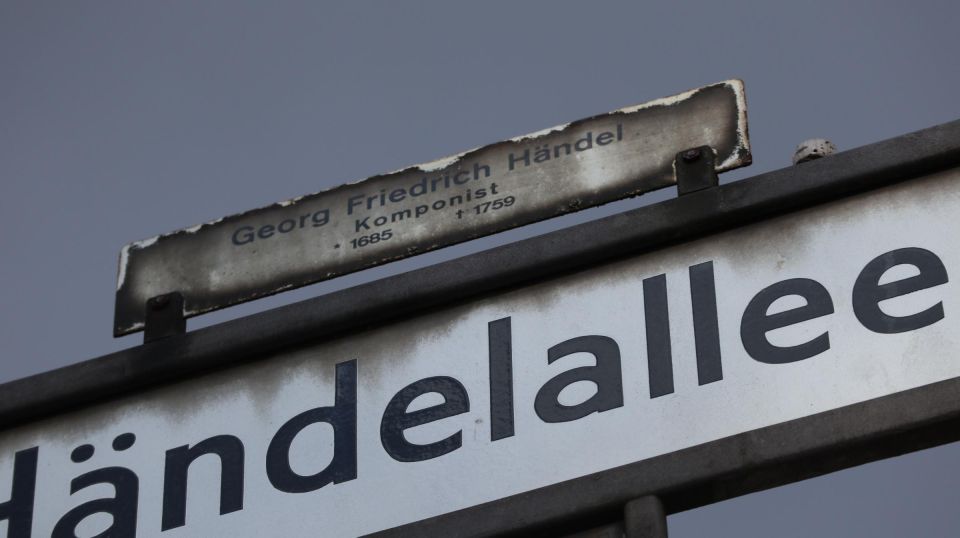
Exploring the Hansaviertel offers a unique glimpse into Berlin’s architectural evolution and historical tapestry.
This guided walking tour lasts about two hours, with 1.5 hours dedicated to insightful commentary from knowledgeable guides. Priced from €20.00 per person, it provides an affordable way to experience this remarkable neighborhood.
Tours are available in both German and English, ensuring accessibility for diverse audiences. The route is wheelchair accessible, making it inclusive for all participants.
Guests can easily find the meeting point by exiting the S-Bahn station Tiergarten via Siegmunds Hof, where a guide with an orange umbrella awaits.
Plus, the cancellation policy allows for free cancellations up to 24 hours in advance for a full refund—making planning hassle-free.
Historical Context
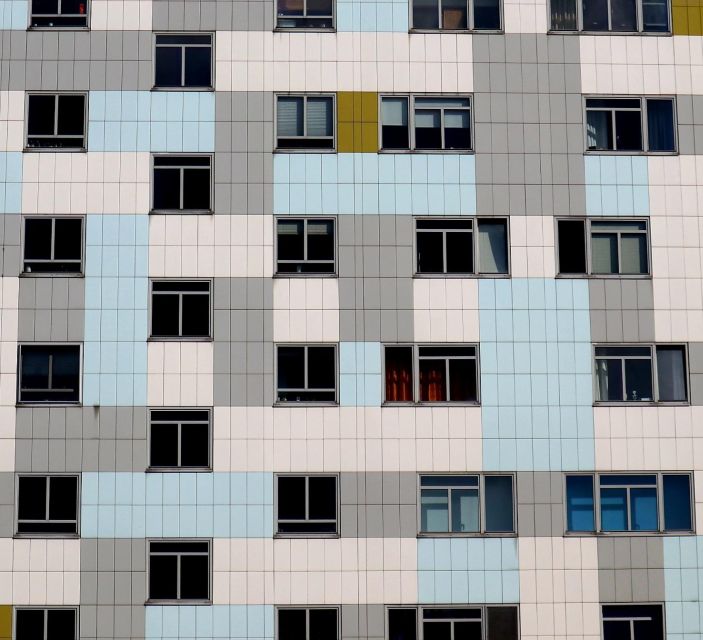
The rich historical context of Hansaviertel reveals how this neighborhood evolved in response to significant socio-political changes. Founded in the late 19th century, Hansaviertel reflects Berlin’s rapid population growth and urban development.
The area experienced profound destruction during Kristallnacht in 1938 and the bombings of World War II, which left a lasting impact on its architectural landscape.
In the post-war period, the neighborhood underwent a major reconstruction effort, embracing modernist architecture as a symbol of Western ideals during the Cold War.
This architectural shift not only aimed to rebuild but also to represent a progressive vision for urban living, setting Hansaviertel apart from other areas influenced by the prevailing socio-political tensions of the era.
Architectural Highlights
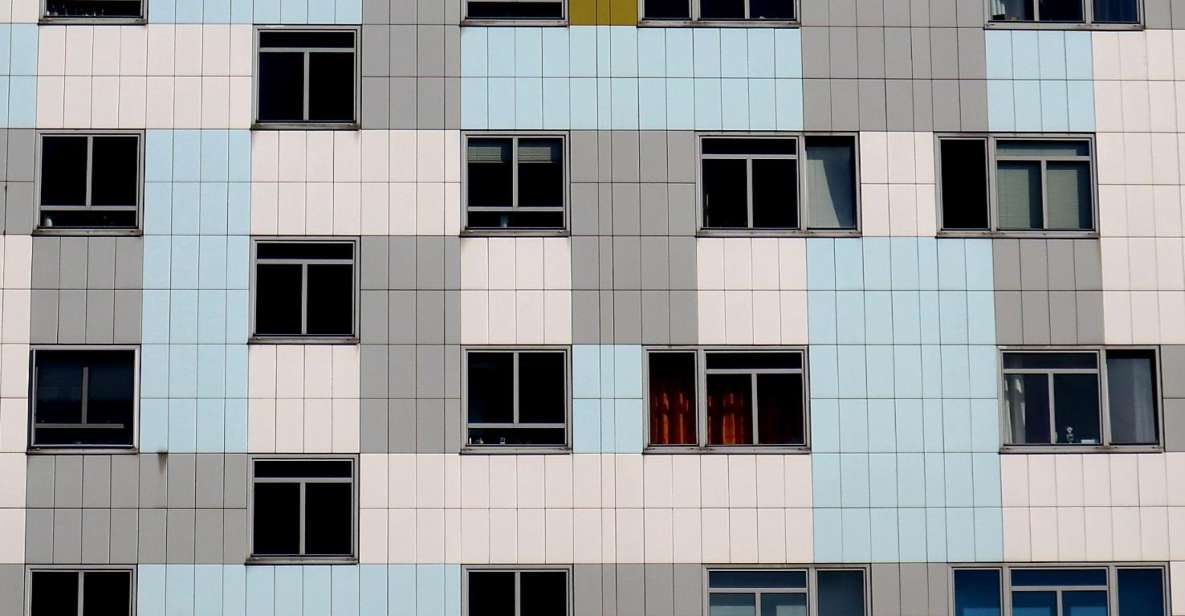
Hansaviertel boasts a remarkable collection of architectural gems that highlight its modernist heritage.
This neighborhood features stunning works by renowned architects like Walter Gropius and Alvar Aalto, whose designs reflect innovative thinking and stylistic diversity.
The 1957 Interbau exhibition showcased modernist ideals, introducing space age and deconstructivist elements that continue to inspire today.
Visitors can admire the sleek lines and functional aesthetics that contrast sharply with the socialist architecture found in East Berlin.
Each building tells a story of resilience and progress, embodying a vision of the "city of tomorrow."
Exploring these architectural highlights offers a deeper appreciation for Hansaviertel’s unique place in Berlin’s architectural landscape, making it a must-see for enthusiasts and casual visitors alike.
Community and Culture
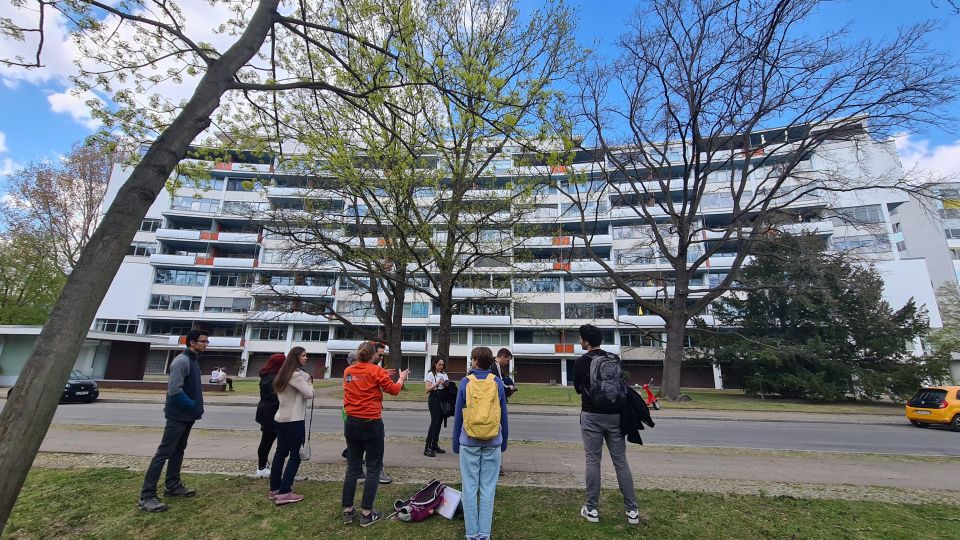
Beyond its stunning architecture, the community and culture of Hansaviertel reveal a rich tapestry of history and social dynamics. The neighborhood’s past is interwoven with the legacy of its Jewish population, who contributed significantly to its vibrant community life before the Nazi regime’s destruction.
Today, Hansaviertel thrives as a hub of cultural activities and social engagement, reflecting the resilience of its residents.
- A lively arts scene with galleries and exhibitions
- Community events celebrating local traditions
- Green spaces promoting social interaction and relaxation
- Historic landmarks that tell stories of the past
- Diverse culinary offerings from around the world
Visitors can enjoy this dynamic environment while appreciating the neighborhood’s historical significance.
Notable Residents
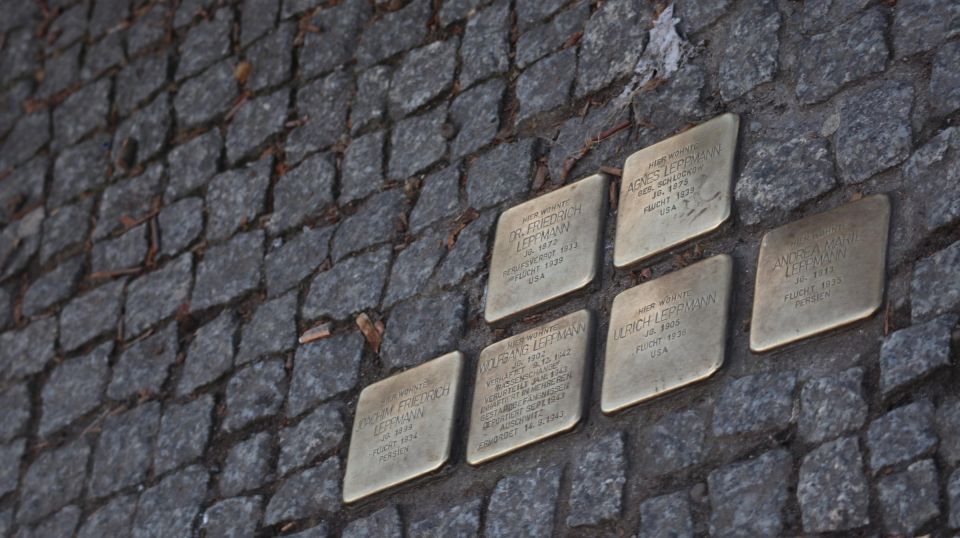
Who could have imagined that such a small neighborhood would be home to a diverse array of influential figures?
Hansaviertel has been a sanctuary for artists, revolutionaries, and thinkers who shaped Berlin’s cultural landscape. Among its notable residents are the renowned playwright Bertolt Brecht, whose works continue to resonate today, and the influential architect Walter Gropius, who played a pivotal role in modernist design.
The neighborhood also housed prominent Jewish intellectuals before the atrocities of the Nazi regime. Each of these figures contributed to the rich tapestry of Hansaviertel’s history, leaving lasting impressions on both the community and the city.
Their legacies continue to inspire future generations, making Hansaviertel a significant cultural touchstone in Berlin.
Practical Information
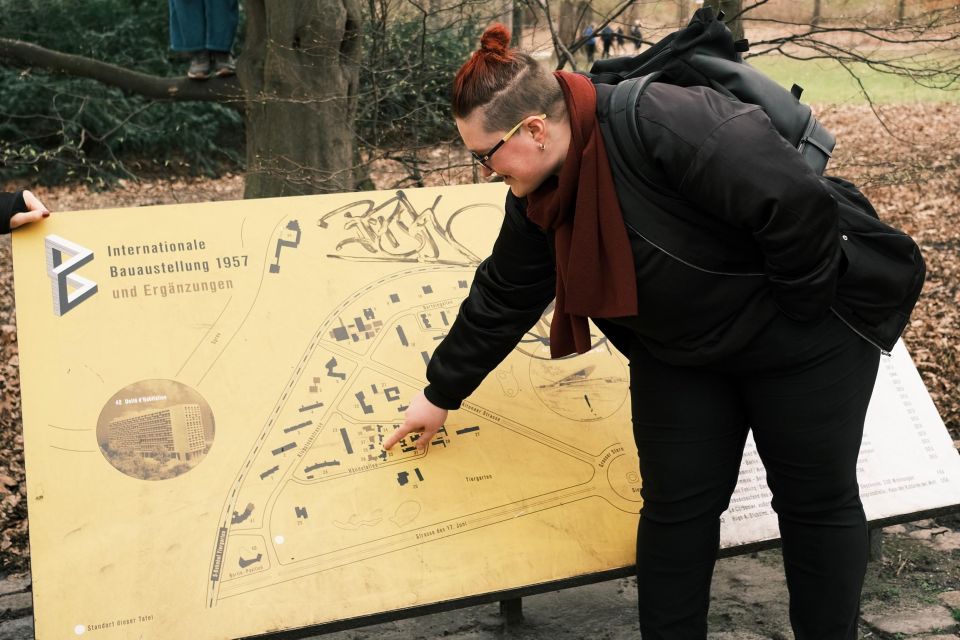
Exploring the Hansaviertel is made easy with clear practical information for visitors. This vibrant neighborhood offers an engaging walking tour experience, ensuring everyone has a great time.
-
Meeting Point: Exit S-Bahn station Tiergarten via Siegmunds Hof; look for the guide with an orange umbrella.
-
Duration: The tour lasts about 2 hours, with 1.5 hours guided.
-
Price: Starting from €20.00 per person, it’s an affordable option for exploring.
-
Languages: Tours are available in both German and English, catering to diverse audiences.
-
Cancellation Policy: Enjoy peace of mind with free cancellation up to 24 hours in advance for a full refund.
With this information, visitors can confidently embark on their Hansaviertel adventure.
Accessibility Features
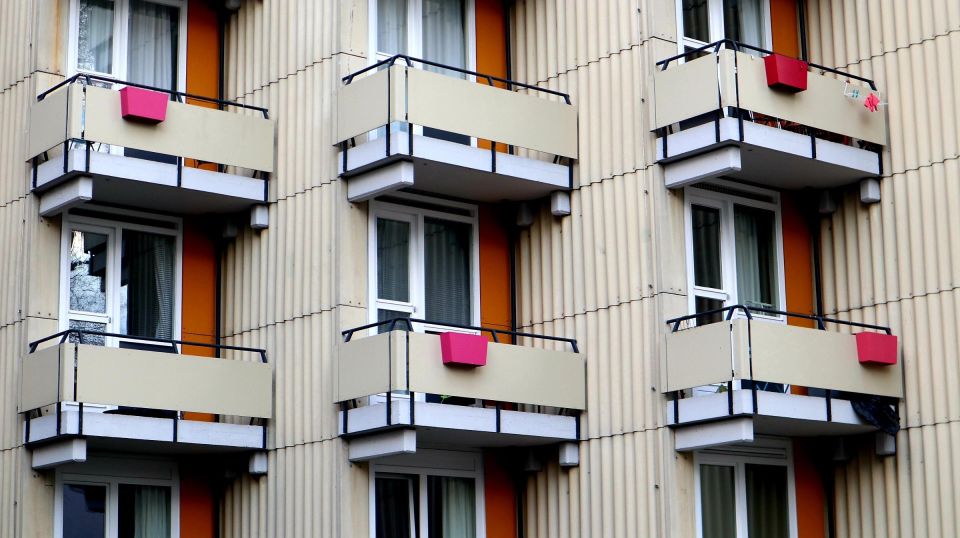
Many visitors can enjoy the Hansaviertel walking tour, thanks to its thoughtful accessibility features. The tour ensures that everyone can experience the beauty and history of this unique neighborhood.
| Feature | Description |
|---|---|
| Wheelchair Accessible | All main paths are suitable for wheelchairs. |
| Guided Assistance | Guides are trained to assist guests with mobility challenges. |
| Rest Areas | Designated rest areas are available along the route. |
| Visual Aids | Informative materials are provided in large print. |
These features allow people of all abilities to explore and appreciate the architectural marvels and cultural significance of Hansaviertel. The tour promotes inclusivity, making it a welcoming experience for all.
Customer Feedback

Visitors consistently rave about the Hansaviertel walking tour, earning it an impressive overall rating of 5/5 based on four reviews.
Participants appreciate the engaging historical narratives and the knowledgeable guides who bring the area’s rich past to life.
- Insightful stories about the neighborhood’s development
- Stunning modernist architecture showcased during the tour
- Friendly and approachable tour guides
- A perfect balance of history and culture
- The opportunity to explore a unique part of Berlin
Here's a few more nearby tours and experiences we think you'll like.
Frequently Asked Questions
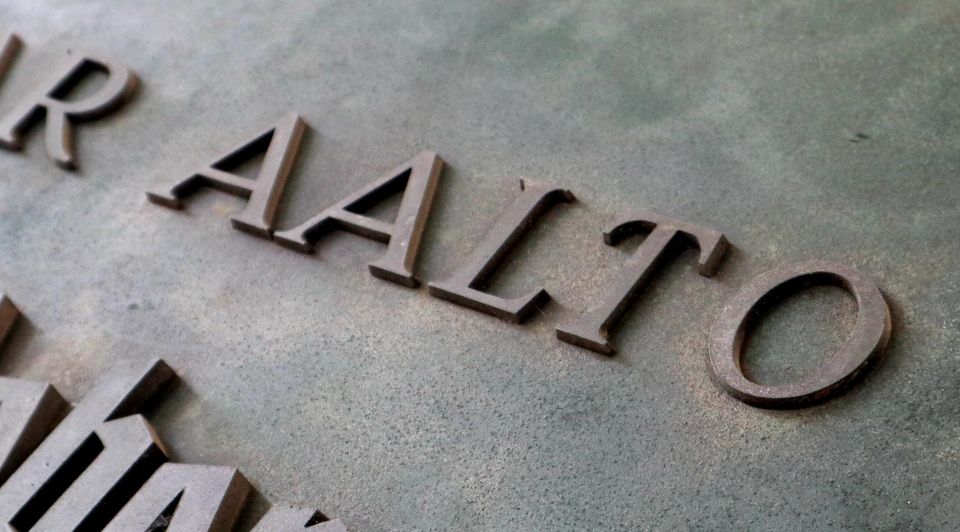
What Should I Wear for the Walking Tour?
For the walking tour, she recommends comfortable shoes for walking, weather-appropriate clothing, and layers in case it gets chilly. A light jacket and a hat can enhance the experience, ensuring she’s prepared for any conditions.
Is There a Restroom Available During the Tour?
During the tour, restrooms aren’t available on-site. Participants should plan accordingly, considering nearby facilities before starting. Staying hydrated is essential, but knowing restroom locations helps ensure a comfortable experience throughout the two-hour journey.
Can I Bring My Dog on the Tour?
The tour doesn’t allow dogs, ensuring a comfortable experience for all participants. However, service animals are permitted. Attendees should plan accordingly and consider leaving their pets at home for the duration of the tour.
Are Food and Drinks Allowed During the Tour?
During the tour, participants can’t bring food or drinks. They’re encouraged to enjoy refreshments before or after the experience. This keeps the focus on exploring the rich history and architecture of the area.
How Do I Get to the Meeting Point?
To reach the meeting point, participants should exit the S-Bahn station Tiergarten via Siegmunds Hof. They’ll find their guide holding an orange umbrella, ready to start the engaging tour of the area.
Not for you? Here's more of our most recent tour reviews happening neaby
- Berlin: Tour Through Moabits Criminal History
- Art:Berlin – Grunewald Villa Colony
- Explore Berlin Tour: History and Highlights
- Berlin: Manufacture Guided Tour & Tasting
- Berlin: Urban Exploration With Daily Bike Rentals
- Berlin-Marwitz: Factory Tour of Hedwig Bollhagen Ceramics
- Berlin: Alternative Walking Tour Mitte & Kreuzberg
- Berlin: Friedenau Neighborhood Historic Walking Tour
- Berlin: City Center Walking Tour
- Berlin: Charité Hospital History Walking Tour
- Berlin: Quatsch Comedy Hot Shot Show Ticket
- Berlin: Underground Party Tour
- Berlin: Walking Tour of Prenzlauer Berg
- Queer Berlin Walking Tour
- Berlin: Guided Walking Tour in English
Recap
To sum it up, the "Berlin: Walking Tour Through the Hansaviertel" offers a unique opportunity to explore a remarkable blend of history and modern architecture. Participants not only admire the innovative designs of architects like Walter Gropius but also gain insight into the vibrant community and its Jewish heritage. With accessible paths and knowledgeable guides, this two-hour tour promises an enriching experience for all. It’s a must-do for anyone looking to connect with Berlin’s cultural legacy.
